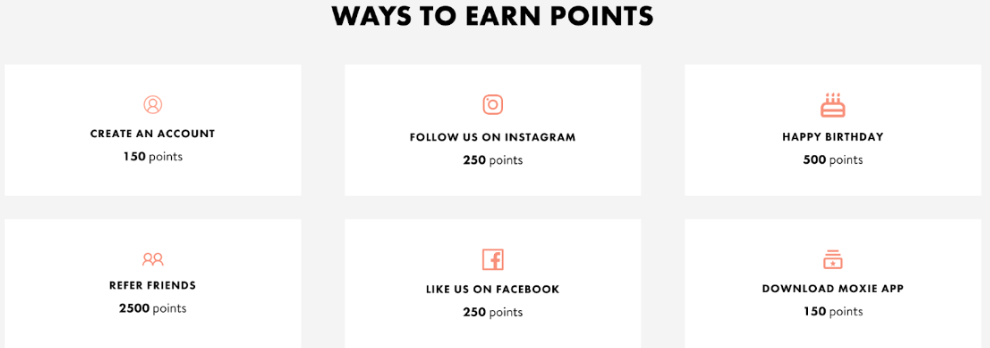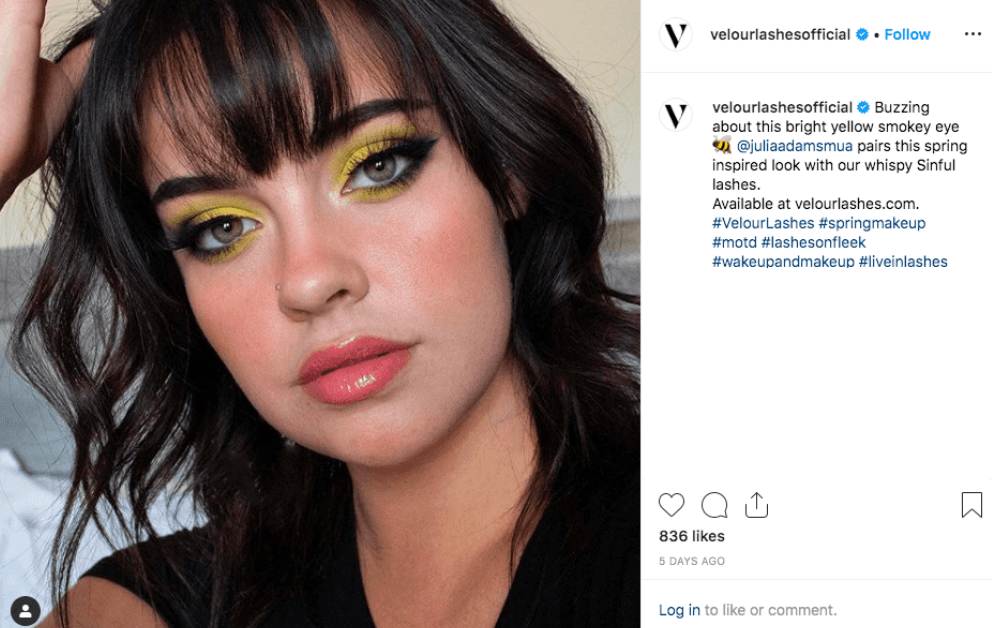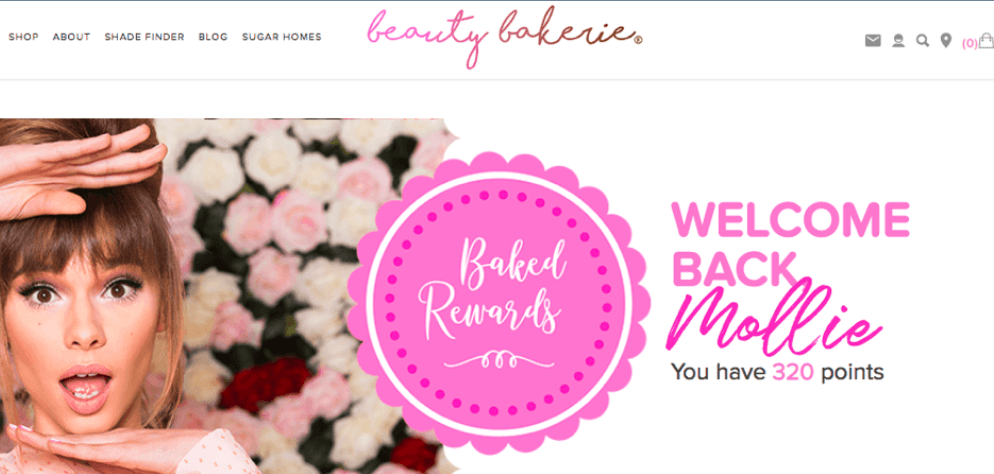-
Platform
Growing revenueManaging your programMeasuring success
- Pricing
-
Resources
Customer supportLearnDiscover
- Partners
Register for the ultimate virtual loyalty and retention event - Loyalty Connect Register now
The beauty and cosmetics industry is huge. In 2022, it was valued at $262.21 billion. And between 2023 and 2030, it’s predicted to expand by an average of 4.2% each year.
It’s also a remarkably resilient industry. During the 2008 financial crash, when demand for non-essential goods nosedived across a range of industries, spending barely dropped at all, after which it quickly recovered and returned to consistent year-on-year growth.
So, for brands in the beauty and cosmetics space, there’s a lot of revenue to be generated through loyalty — if you can carve out a share of the market.
This is a big if. Partly because it’s a crowded, competitive space, but also because beauty customers are typically very loyal.
A 2019 report by Ernst and Young notes that brand-specific customer loyalty is one of three factors that have led to an increase in revenue for beauty and cosmetics brands.
This sentiment is supported by individual case studies, too. Ulta Beauty generates a whopping 95% of its sales from members of the loyalty program.
What’s behind this unusual loyalty? Perhaps it’s the highly personal nature of the industry. Specific people need specific products, and the development of an effective skincare routine typically takes a bit of trial and error.
The continued prevalence of in-store shopping — sustained by the need to physically try a product before buying — supports this. The same Ernst and Young report notes that “[d]espite the fact that more than 70% of purchases are influenced by online channels, physical transactions remain almost 90% of the total purchases.”
Whatever the “why” behind customer loyalty in the cosmetics industry, one thing’s for sure: smaller brands can’t compete if they can’t retain their customers. According to EY:
Without loyalty, smaller cosmetics retailers will fall behind the big players, some of whom are already seeing huge growth. “Health and beauty” is Amazon’s second-fastest-growing product category — behind only fashion — with a 12.1% average annual growth rate.
So what keeps loyal beauty customers coming back from more?
A 2020 survey of cosmetics shoppers in the UK and US asked shoppers what factors made them loyal to a beauty company. It found that shoppers are loyal when a company:
– Includes customer reviews throughout the website (74%)
– Sends free samples (72%)
– Recommends new or relevant products (66%)
– Remembers shopping preferences and customizes the experience accordingly (63%)
– Has user-generated content like real customer photos (62%)
– Offers an online, quiz-like experience that recommends products (58%)
– Uses AI or virtual reality to help customers try out products online (45%)
– Is recommended by celebrities or influencers (44%)
– Offers virtual beauty consultations with a real person (41%)
In short, customer loyalty in the beauty industry is mostly earned through:
Social proof and user-generated content (UGC): 84% of customers trust online reviews as much as personal recommendations. So gather them. Use them. It’s inexpensive and demonstrably very valuable.
One of the best ways to get your customers to leave reviews is to incentivise it. And here, loyalty programs can be really valuable. Rather than just giving out loyalty points for making purchases, you can incentivise all sorts of behavior.
MoxieLash, for example, dishes out points for social media follows, referrals, and app downloads. You can do similar things with reviews.

If we follow the customer loyalty stats above, those reviews you incentivize will encourage new customers to spend money with you repeatedly. You can then incentivize those new customers to leave reviews through your loyalty program. Those new reviews will convert more customers, which in turn…you can see how it goes.
But reviews aren’t the only form of social proof customers care about: as well as valuing their opinions, 62% of beauty shoppers want to see photos and videos of other customers using the products.
In an industry with such a strong sense of community — the MakeupAddiction subreddit has over 4 million members — this makes sense. And one of the best channels for making the most if it is social media.
Again, rewarding social media interactions via your loyalty program can be a great way to incentivise engagement and build a community around your product. Like Velour Lashes does.

However you approach it, make sure you focus on real customers — at least at first. One thing that jumps out from the data above is the difference in trust between customer recommendations (74%) and influencer recommendations (44%).
This suggests that, while influencer relationships can be highly beneficial, you don’t necessarily need huge budgets for influencer marketing campaigns to start building trust and loyalty from your customers.
Freebies: “People like free stuff” might not be the most surprising statement you read today, but you can’t ignore its power as a loyalty factor: 72% of cosmetics shoppers are more likely to make repeat purchases with brands that let them try things out for free.
Again, this is likely down to the highly personal nature of the beauty and cosmetics industry — even an objectively high-quality product won’t work for everyone’s skin.
Beyond samples, you can give out other types of freebies or exclusive deals through your loyalty program. These could include special discounts, early access to new products, or limited-edition items.
As customers work their way through the tiers, they’ll get more substantial freebies or unique experiences, so they’re more likely to spend more money.
Personalization: 74% of people hate being shown irrelevant content and 48% of consumers spend more when their experience is personalized.
“Beauty is a very personal thing,” says Finding Ferdinand Founder, Nhu Le. “People don’t want to be told. They want to choose what looks good.”
While some brands are going the whole nine yards and giving customers the opportunity to create their own one-of-a-kind lipstick, you can start with the nuts and bolts of personalization — offering the kind of tailored product recommendations that 66% of shoppers value.
With a loyalty program, you can collect important data on your customers such as the:
– pages they have visited most on your site
– items they have added to their baskets
– time spent on each page
All of this data forms an overall picture of their interests and preferences.
Use this data to tailor product recommendations as a way of cross-promoting and upselling more items. This can be done via personalized homepages, targeted social media advertising and loyalty emails. All of these personalized and highly relevant interactions increase the chance of purchase.
Over time, you can get more sophisticated by personalizing the experience for your customers every time they log into your site — 63% of beauty shoppers value this.
Brand your loyalty page with their name, a reel of their previous purchases and complementary products.

– Net Promoter Score (NPS)
– Average order value (AOV)
– Customer lifetime value (CLV)
– Repeat purchase rate (RPR)
– Churn rate
– Social media engagement
– Qualitative feedback
You can gather this data by:
– Using your CRM or loyalty program platform
– Running surveys and gathering feedback at key stages of the customer journey
– Segmenting your customers
– Integrating your various data sources so there’s a single source of truth
Concepts like “loyalty marketing strategy” might seem daunting, but the stats and examples in this article show that it doesn’t have to be.
Start small. Gather reviews. Personalize your interactions. Incentivise social media engagement. And gradually you’ll see your repeat purchase rates and average order values grow and grow.
With this, LoyaltyLion can help. When you’re ready to get started, book a demo.